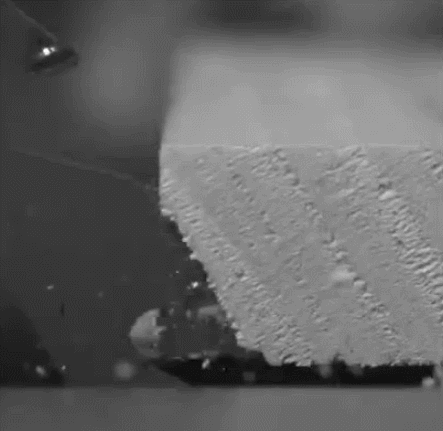Power Tools
A Power Tool is a tool which is powered by an electric motor which takes the manual labour out of work. There are stationary and portable variations of most power tools which both have their own benefits in different applications. The power tool is usually fit with a circular cutting blade which is used to cut material (seen on the right). There are also straight blade variations like the Bandsaw and Jigsaw (see below).
As Power Tools work at extreme speeds there are a wide range of Hazards, Risks and Management Procedures that come with them. These are:
Hazards:
● Sharp Blade
● Projectiles
● Dust & Noise
● Foreign Materials
● Obstuctions in the workplace
● Waste
Risks:
● Damage to Machine/Job
● Self Harm / Harm to others
● Dust Inhalation
● Tripping on Waste
● Eye Injury
Management:
● Confidence
● PPE
● Clamping Work
● Communication
● Two Hands on top of Machine

This is a slow motion gif of how the blades of a Table Saw cut through timber.

This is a Drop Saw also known as a Compond Mitre Saw. It is mainly used for cutting lengths of timber to a desired length.

This is a Jigsaw. It's main benefit is that it can cut curves and intricate shapes where other tools cannot.

This is a circular saw. It is mainly used for cutting large boards of material to a desired length and width.

This is a Table Saw. It is the stationary version of a Circular Saw. Its main use is to trim lengths of timber to a desired width.

This is a Bandsaw. It works similarly to a Jigsaw as it is capable of cutting curves. It main benefit is that it can cut extremely thick peices of timber.